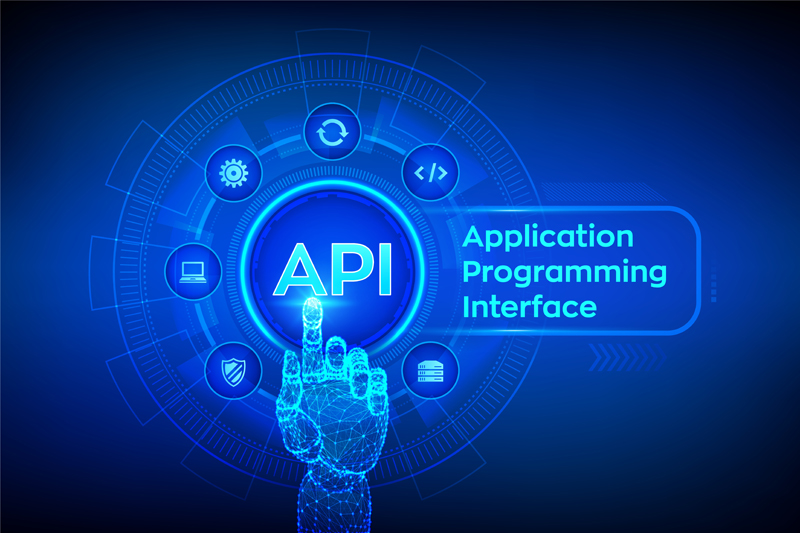Application programming interface (API) is now more than a buzz phrase and has become a key enabler of digital transformation that enables businesses to monetize data, develop new revenue streams, streamline market strategy, deliver better experiences to their customers and open new pathways for innovation and growth. So, whether your business needs to connect to customers, market products or analyze data – APIs can help. In a rapidly evolving market, where businesses have to generate value in an increasingly connected service ecosystem, APIs play a fundamental role in aiding your business strategy and contributing to the revenue. In fact, more than 85 percent businesses consider web APIs and API-based integration fundamental to their business strategy and continued success. As businesses scale up their API initiatives, it is extremely important to create a mature API strategy that aligns with their overall objectives. Businesses need to look out for intelligent ways to handle and analyze data efficiently. The need for rapid data transmission has led companies to rely on business process outsourcing services to handle challenging data entry and analytics needs.
What does it mean to be API- Driven?
An API (Application Programming Interface), is a software intermediary that allows two applications to communicate each other. Without APIs, the digital experience which we are accustomed to would not be possible. In short, APIs work in the background to help people connect or give access to the specific piece of information of technology required. Companies that plan to integrate APIs into their digital strategies can gain huge benefits as the technology helps integrate and connect people, places, systems, data and algorithms to create new experiences, products, services and business models.
There are several reasons why businesses should consider launching APIs. This technology ensures advantages such as the following –
- Increase revenue
- Extend customer reach and value
- Stimulate business and technical innovation
- Reduction in development effort
- Superior digital experiences
- Faster time to market
- Enable new technologies
- Allows applications to communicate with backend systems
These business benefits make it clear that APIs are becoming a major component that companies should implement to achieve digital success.
Need for an Effective API Strategy
According to reports from Harvard Business Review, about 50 percent of sales force revenue is generated through APIs; Expedia.com has generated a whopping 90 percent in recent years. In fact, a considerable chunk of the enterprise technology investments today is generated from API initiatives. The need for an API strategy thus stems from the probable growth of these APIs within a company. However, what happens when the growth of API technology is too challenging to manage?
The lack of an effective API strategy can prove to be a limiting factor once you start scaling up your APIs. As businesses climb up to the maturity scale, they reach a point where the internal IT infrastructure, existing partner and customer offerings, as well as new business models are increasingly reliant on APIs. At that specific stage, your company may start losing visibility if you don’t have a well-defined API strategy. Managing and governing APIs, evaluating usage and performance and even understanding evolving requirements for certain APIs will become increasingly difficult. Further more, with any fragmented business process, your API initiative might become a cost center rather than a growth driver.
Implementing a strong API strategy allows you to have a complete view of how APIs can drive your business growth, support existing value chains and create new ones. It allows the creation of integration tools that drive adoption, integrate effectively with partners and scale internal operations. This also helps lower the total cost of ownership (TCO) and maintenance costs.
How to Implement a Successful API Strategy in 2020 – Tips
Before implementing an API, it is important to carefully consider what is entailed in a successful API strategy.
As many organizations are realizing the incredible value that APIs bring in, they are already leveraging this technology without any careful thought. The best API strategy is not to start with an API strategy. Instead, it is better to focus on your specific business strategy and customer experience. What are the specific objectives you need to achieve and what type of decisions will enable these objectives? Then sort down what type of application programming interface strategies may best enable communication between business partners and customers. Move on to identify the design for these APIs and use cases and you will get an API strategy that best suits the business objective.
Here are some important tips to implement a successful API strategy for your business in 2020 –
- Digital Strategy Alignment – The first step in defining your API strategy is aligning to your overall business and digital strategy. Establishing a digital strategy is one of the critical tasks and it is crucial to align stakeholders, define business outcomes, and validate the ecosystem and business models. This involves the following –
- Determine how your API will relate to desired business outcomes – Are you trying to accelerate your digital transformation and improve customer experience or is there an opportunity to disrupt your industry by providing a robust API?
- Determine the target audience for API consumption.
- Perform a data audit to know whether the type of data collected may help you deliver value to your customers.
- Determine desired outcomes for your API.
- Review your existing IT infrastructure (apps and systems) to know what you have to build on and where you need to create data gaps.
- Develop and prioritize a high-level API roadmap that will support the overall digital strategy.
- Align the organization and culture – The next step in implementing a successful API strategy is to implement organizational change to support API-first thinking. Make everyone in the organization understand what API is all about and its relative importance. Take time to train IT staff to implement, maintain and coordinate your APIs, including someone who can develop API-related policies and procedures. Ensure that you involve employees in the planning of outcomes you want to achieve. Make APIs the center of your organizational change. It is important to think of your API as a product and implement processes and procedures to support it as such.
- Choose the right API platform and tools – The next step is to implement the right full lifecycle API management platform that will ably support your API initiative. This will involve a “buy” decision if you don’t already have the right tool in place. Building your own API management platform is not the right decision for (almost) any enterprise. It is essential to consider the API platform’s capabilities (like API design, security, publishing, analysis, monitoring, and monetization) as they relate to your short- and long-term needs. Additionally, analyze the developer portal and its usability from a consumer developer’s viewpoint. It is also important to evaluate API management products for their fit in your technology landscape.
- Disseminate up-to-date and easy-to-grasp documentation – One of the important prerequisites for API success is clear, easy-to-use and easy-to-grasp documentation. As documentation quickly becomes stale and out-of-date, users fail to derive value from it and lose trust in the company. API customers demand top-notch documentation. According to the 2018 State of API Integration Report, improved documentation represents the second most common customer request. The best companies are focused on ensuring that documentation is accurate, up-to-date, and easy to understand. They embed documentation into the user on-boarding experience. A thorough review process is done each time a change occurs. Companies also establish channels that allow users to point out mistakes and ask questions. Equally important, they create an environment that allows users to test the quality of API documentation prior to purchase.
- Build the right API architecture and governance – Establishing the right API architecture patterns and the right governance model to support your API program is another important strategy. This involves the following –
- Full API lifecycle management (right from planning and design to optimization)
- API scalability to handle both internal and external API consumers
- API adaptability to new business models
- API manageability and security
- Run a pilot API project – Start with a small, low stake API project before publishing the full version for the whole world to use. Correctly define the use case and create an execution plan to measure the success of the API project. Analyze what is working and what is not working, uncover potential vulnerabilities in your integrations, and identify ways to drive adoption for your API when it goes live.
- Tracking success – Many companies measure the success of their API strategy using vanity metrics like number of developers or number of API calls. On the other hand, certain other companies track the effectiveness of their API strategy holistically. According to a research conducted by Apigee, successful companies differ from lower performers in the area that they clearly define and measure a combination of business success metrics. These include revenue and consumption metrics such as the number of developer calls. Companies should measure, track, and evaluate three types of API metrics. Firstly, it is important to monitor revenue metrics such as direct and indirect revenue, ROI, and CLTV per developer. Secondly, it is important to measure operational metrics such as uptime and error. Thirdly, it is important to measure developer metrics such as NPS, community engagement, documentation engagement, and churn. A holistic measurement of the success of API program is important.
- Start building a digital ecosystem – Once you have put your APIs in place, and you are forming a digital ecosystem around that, it is extremely important to engage that ecosystem. Organizations that embrace a digital ecosystem will expand the reach of their core business, strengthen their connections with partners and customers, and encourage and develop innovations that deliver recurring profits. Creating, integrating, and managing APIs effectively is a critical prerequisite for participating in a digital ecosystem. To leverage APIs effectively, it is essential to put a clear, realistic API strategy in place. Engage your ecosystem through evangelism, productivity tools, training, and hackathons with the sole objective of creating an awareness and adoption of your platform.
Overall, Application Programming Interface (APIs) have immense potential to transform business processes. The growing trend of API is expected to get bigger with more and more API-enabled technology solutions in the workplace. In fact, in the year 2020 we will see wider adoption and a growing pool of providers that are likely to start offering more customized applications and services for specific or specialized tasks. This will mean no company will have any excuses left not to use these emerging trends. As traditional strategies relied on large sales forces, paperwork and other time-consuming and expensive measures to manage their business data, forward-thinking companies are reducing costs and time spent by building their solutions with best-of-breed components, which they access via APIs. The influence of APIs is growing beyond tech-based companies. The technology will also help create new user experiences, better outcomes, and ensure we are achieving our business goals in an efficient manner. Error-free data entry services along with API technology can streamline business functions, reduce expenses, improve customer experience and help in efficient data consolidation.




